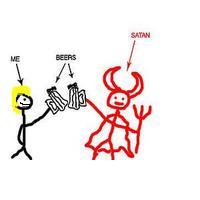Listened to a History Stuff podcast about Aaron Burr. Aaron Burr is of course famous for killing Alexander Hamilton in a duel but he also was involved in a conspiracy after that to become the King of Louisiana. Dude, Americans don't like kings. How could you not have learned that from the Revolution?
Basically, his political career was finito after killing Hamilton whom he challenged to a duel after his feelings were hurt by stuff Hamilton said at a dinner party. He was acquitted of murder charges. He then moved to the Ohio River Valley and tried to gather land and an army for the aforementioned king plan. One of his conspirators unfortunately for him was James Wilkinson, a shady guy who was discovered to be an agent of the Spanish crown after his death. Some people believe he was involved in a plot to kill Meriwether Lewis (there is some controversy over whether his death was a suicide.) Wilkinson eventually turned him in to Jefferson who had him charged with high treason in 1807. The Supreme Court took a strict reading of the law and acquitted him. He had to flee the country after that though and spent time in Europe until he was basically kicked out of England and refused entry to France. He still tried to become King of Louisiana. Obviously, he was not successful.
So this was a touching story: David Cameron, the new British PM, apologized for Bloody Sunday (January, 1972 in Derry, Northern Ireland) after the release of the Saville Report. It was really politically courageous and heartfelt. I'm very impressed. The Saville Report took 12 years to compile and was 1200 pages. The introduction alone was 60 pages. The previous report, which exonerated the military and claimed the victims had weapons, was around 60 pages in toto and came out of an investigation called the Widgery Tribunal. Bloody Sunday is sometimes known as The Bogside Massacre in Ireland.
Moving on to Science Diction which told the story of how the cell got its name. Cells were first seen in a microscope to Robert Hooke who was looking at cork. They reminded him of the tiny rooms occupied by monks called cellula, hence the name. The word made its scientific debut in Hooke's book, published in 1665. This was also the book that inspired Anton van Leeuwenhoek to buy a microscope, improve its lensing and found the field of microbiology in Holland in 1674. Another fun fact I learned from Wikipedia: van Leeuwenhoek was the executor of Jan Vermeer's will when he died in 1675.

No comments:
Post a Comment